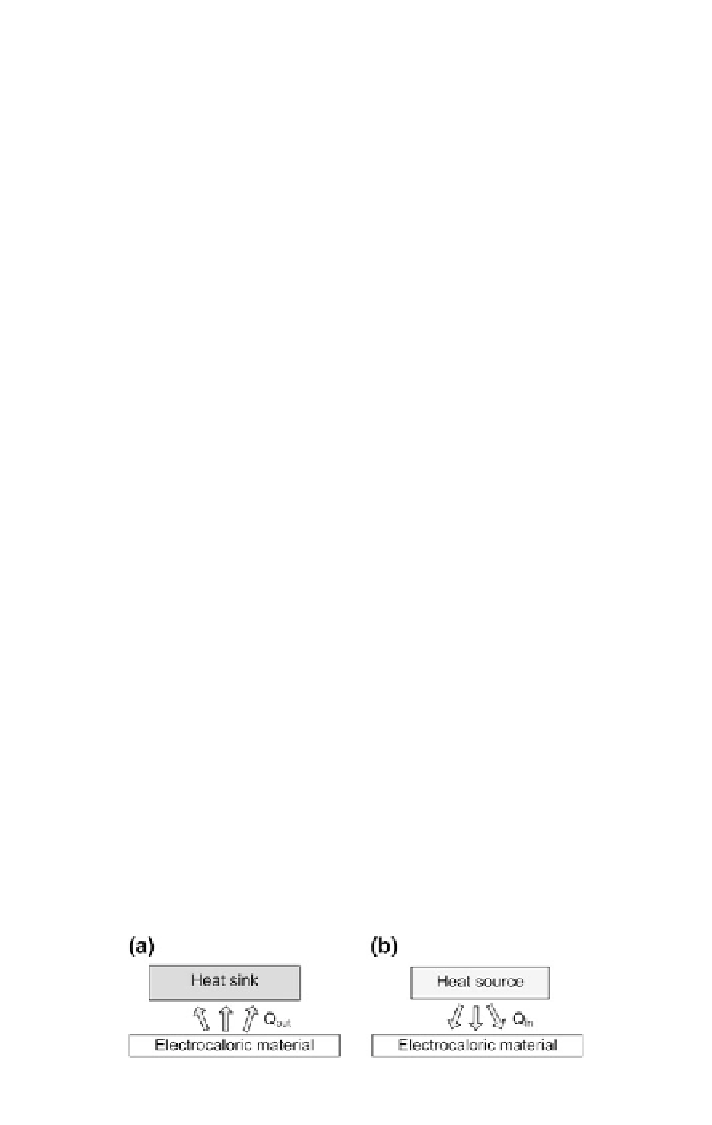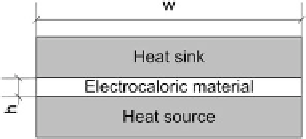Environmental Engineering Reference
In-Depth Information
Fig. 10.3 Schematic presentation of an electrocaloric material positioned between a heat sink and
a heat source
depolarization (when the material cools down), heat will be, at the same time,
transferred in both directions, towards the heat sink and the heat source, respectively.
Therefore, only a portion of the heat is actually
“
pumped
”
from the heat source to the
heat sink and such a device cannot operate ef
ciently as a refrigerator or a heat pump.
cient operation of an electrocaloric cooling or heat pumping
device, the simple system presented in Fig.
10.4
should be considered. The heat
sink and heat source are physically separated and no heat can be transferred
between them. During the time of polarization (Fig.
10.4
a), the electrocaloric
material is only in thermal contact with the heat sink and transfers the heat gen-
erated, due to the electrocaloric effect, to the heat sink. Next, the electrocaloric
material is moved from the heat sink to the heat source (Fig.
10.4
b). The electro-
caloric material is then depolarized and can absorb the heat from the heat source.
Such a device could already work as a refrigerator or a heat pump; however, its
performance would probably be very limited. Therefore, other concepts about how
to design an electrocaloric refrigeration or heat pumping device should be con-
sidered. Those known to the authors of the topic are discussed later in this chapter.
To achieve the ef
Device with an Active Heat Regenerator
The concept of a device with an active heat regenerator was proposed and explained
by Barclay and Steyer [
43
] in 1982 for magnetic refrigeration and heat pumping
near room temperature. The concept proved to be one of the best solutions pre-
sented so far, and since then the majority of magnetocaloric devices are based on
such an active heat regenerator [
44
]. This idea was
eld of
electrocalorics by Sinyavsky and Brodyansky [
45
] in 1992. Their experimental
rst introduced to the
Fig. 10.4 A schematic presentation of a simple electrocaloric refrigeration or a heat pumping
system, a The electrocaloric material is in an ideal contact with the heat sink, b The electrocaloric
material is in ideal contact with the heat source


Search WWH ::

Custom Search